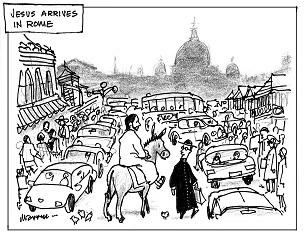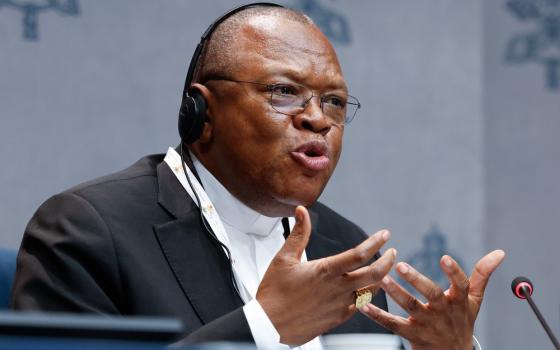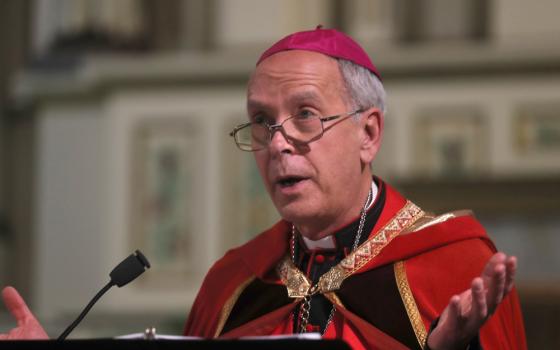

“Jesus said to his disciples, ‘Sit here while I pray’” (Mark 14:33).
Palm Sunday of the Lord’s Passion
Mark 11;1-10; Isa 50:4-7; Ps 22; Phil 2: 6-11; Mark 14:1—15:47
Today’s liturgy is so rich in Scripture, including the reading of the Passion, that a homily is secondary to the invitation to participate in the events being described. We have so many images and figures to identity with as each of us takes our place within the crowds lining the road into Jerusalem, at the table of the Last Supper, in the garden where Jesus is arrested, along the way of the cross and at the foot of the cross. If we make this story our own and can see it being played out today in the suffering in our world, it becomes Christian formation in the most profound way possible.
The Palm Sunday procession is a chance for ecumenical partnership with other faith communities, meeting somewhere to share the readings, exchange palms, then process to our respective churches as a prayer for unity still to come. The image of Jesus riding on a donkey colt fulfilled Zechariah 9:9 but was also a powerful parody of the triumphal entry of conquering generals on their war horses. The humble donkey, a beast of burden and a symbol of peace, fit Jesus’ messianic role. It is also an invitation to us to be Christ-bearers.
Please read Mary McGlone’s reflection on the anonymous “Anointing Woman” for a profound invitation to identify with this passionate affirmation of Jesus as the Christ (Anointed One). Her act of love fulfills Philippians 2:6-11, an early hymn about the kenosis (Self-emptying) of God in Jesus’ surrender of his divine status to become the victim of human sin who redeems us as our victorious Savior. https://www.ncronline.org/news/spirituality/scripture-life/palm-sunday-be-anointing-woman
Mark’s Passion, the shortest of the four Gospels, takes us through the Last Supper, its fog of misunderstanding and denial by Jesus’ closest disciples, focusing especially on proud Peter who boasts of a loyalty that will be shattered by fear to break open his understanding of the mercy he will preach from his own experience of failure. Where are we in these scenes? Which characters do we most identify with?
Crucifixion was so brutal even the evangelists do not dwell on the details and instead focus on the meaning of the potent symbols and scriptural precedents being fulfilled. Jesus’ greatest suffering is in the struggle within his spirit as life drains from his body and his mind confronts him with the cry of the Psalmist who feels abandoned by everyone, even God, as he carries the sin of the world across the last threshold of death to defeat despair and the mocking voice of Satan that his mission has failed. The last lines of Psalm 22 are a song of praise as Jesus, like a long-distance runner, breathes his last as he crosses the finish line.
The Passion, its cruelties and betrayals, ends with the grieving and final service of the only disciples who remained faithful to the end -- the women. Perhaps the woman who poured out precious perfume on Jesus earlier was among them, their hearts broken like the alabaster vessels holding their love for Jesus as he is carried to a borrowed tomb. We, too, are left on the desolate hill of Golgotha in the gathering storm as nightfall covers the whole world, bereft of God and awaiting the divine response.
But Holy Week and the Triduum are still before us, more chances to immerse ourselves, mind, heart, soul and strength, in this central encounter with the mystery of the Word made flesh, whose life, death and resurrection are our only hope of salvation. Jesus asked his disciples to sit with him in the garden as he prayed at the beginning of today’s Gospel reading. We now move from being only witnesses to actors in the drama of his suffering. We pray for an increase of faith, and it will be given, but it will take us deeper into the mystery we must make the center of our existence and the meaning of our lives.
Advertisement






